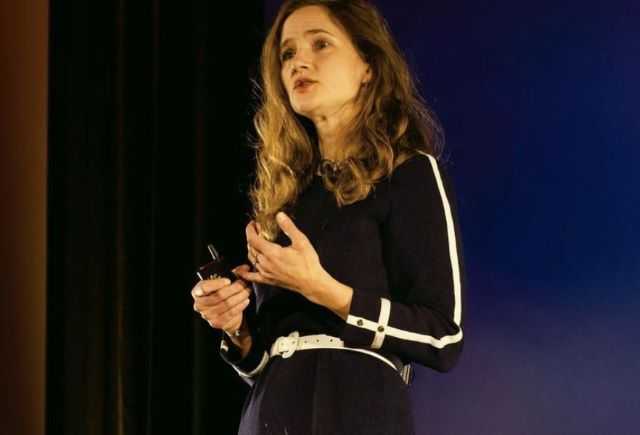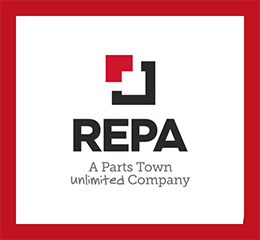MILANO – The latest protocol introduced by SCA is something new that has shaken up the industry a bit, because it has rewritten how and why grading and tasting is done. This requires clear communication activities that can explain the essential points of this Coffee Value Assessment. We talked about this with Kim Elena Ionescu, the Chief Sustainability and Knowledge Development Officer SCA.
How did you set up the 3-year study that led to the evolution of the Coffee Value Assessment?
“The evolution process began with an evaluation of the 2004 form using a two-prong approach: first, the SCA conducted a review of scientific literature published in the preceding years, especially from the field of sensory science, and published the Sensory and Cupping Handbook in 2021.
At the same time, we surveyed users of the 2004 form about their perceptions of the form’s strengths and the areas they wished to see improved and published a paper summarizing those results in 2022.
The conclusions we drew from those two studies informed collaborative research between the SCA and World Coffee Research using a form with new features in 2021, as well as a series of pilot cuppings with subsequent drafts of the evaluation form – which was eventually split into two parts, the descriptive and affective assessments – in 2022.
At that point, we were ready to write and design the draft protocol and the beta versions of the descriptive and affective assessments that we shared with the industry at large in April of 2023.”
By what criteria did you select the 1,600 cuppers to whom you submitted the questionnaire?
“The SCA sent an online survey to our entire global network through email newsletters and social media channels, which is one of the reasons we were able to obtain such a high number of responses.
In addition to the online survey, we held a series of semi-structured interviews with a smaller number (approximately 30) of professional cuppers and experienced cupping instructors from a mixture of producing and consuming countries across Europe, Asia, Africa, and the Americas, to dig deeper into their perceptions of the form.”
What were the reasons why it was necessary to reformulate the Coffee Value Assessment?
“I could write (or talk) for a whole day about this, but I’ll do my best to be concise. The Coffee Value Assessment evolved from the 2004 cupping protocol, and it was necessary to update the 2004 cupping protocol for three reasons:
The cupping protocol is a standard, and standards should be revised periodically – ideally more often than once every two decades.
The specialty coffee industry is much larger and more diverse than it was in 2004, and our tools should reflect that diversity and reflect the industry of the present (and future).
For specialty coffee to be a thriving, equitable, sustainable activity for the entire value chain, the industry needs a way to catalogue and reward extrinsic attributes (information about a coffee that is not defined by the cup profile or score).”
On what basis did you divide the Coffee Value Assessment into 4 assessment types and reassign the value scale?
“Sensory science recommends dividing different types of test, which is why we split the descriptive and affective portions of cupping – which were together on the 2004 form – into two separate assessments.
The physical assessment (still in development) is an update to the Green Grading Form, and the extrinsic assessment is an additional evaluation to perform before or after cupping that enables the cupper to record valuable information about the coffee that previously would have been captured in the “notes” section of the form, or not at all.”
What is the main type that would determine the quality of the coffee in the cupping: the descriptive, the affective or the extrinsic?
“Quality is determined by preference, or how well a coffee “fits” a particular specification, which is subjective and captured by the affective form.”
When will the physical tabs be ready as well?
“We are planning to start a research project (or more than one) in 2024 to help answer questions about green coffee identity that need to be addressed before the SCA can draft a standard for a new physical assessment. Depending on how that goes, we will have a beta version in 2024 or 2025 and in the meantime, cuppers may continue to refer to the SCA Green Grading Principles for guidance.”
What is the big step forward represented by the Coffee Value Assessment thus rewritten, how will it change the industry?
“Again, I could write about this at length, but a summary of the “big step” would include the following:
Separating descriptive and affective assessment into two activities to be done independently, embracing that scores are a reflection of a cupper’s opinion and/or knowledge of a particular market, and therefore, subjective, and recording extrinsic, or informational, attributes that are fundamental to assigning value to a coffee and have not been explicitly acknowledged previously.”
But then with this new protocol, how is it possible to still give a definition of specialty once the scoring threshold is abolished?
“The 80-point scoring threshold was never enforced or even monitored, so it was meaningless in practice.
Frustratingly for sellers, there has also never been agreement on the value of an 80-point (or 85- or 90-point) score, and most buyers would still expect to cup and score a coffee themselves, even if they knew it had been cupped and scored by a credentialed cupper representing the seller.
Basing the definition of specialty on the presence of distinctive attributes, which are recorded on the assessment forms and can be measured (is the coffee floral or not? Is it certified organic or not?) and indexing those attributes against the prices that coffees fetch in the marketplace, will enable us to determine which attributes garner additional value, not just higher scores.”
Are growers happy with this new way of evaluating green? Given that the scoring system potentially helped them demand a higher price for the raw material?
“Growers are a diverse group, but the producers (and producer representatives) who participated in our pilot cuppings in 2022 and Coffee Value Assessment for Cuppers courses in 2023 have expressed unanimous appreciation for the descriptive assessment, which guarantees a more detailed evaluation of a coffee’s flavor attributes than the 2004 form, and optimism about calling out the subjectivity of scoring.
When it comes to using scores to negotiate, as I noted above, buyers expect to cup coffees themselves and use their own scores to determine the value of the coffee, so telling a buyer that a coffee scores an 86 has never been a reliable negotiating tool for most producers.”
Does anything change for the final consumer with this Coffee Value Assessment, or is he still left out of the dynamics that determine the quality of the coffee he will then drink?
“According to the responses to our user survey, the 2004 cupping form was not effective way of communicating to consumers, and while the 2023 beta assessments are not designed with consumers in mind – our focus has always been the evaluation of green coffee to facilitate buying and selling activities – we see both the descriptive and affective assessments as being more consumer-friendly than the 2004 form.
The check-all-that-apply list of descriptors on the descriptive form gives some guidance to an inexperienced taster, and the nine-point hedonic scale on the affective form is a tool commonly used in consumer research, so many people will be familiar with it.
Stepping back from the act of cupping and looking at the role of the consumer in general, the Coffee Value Assessment recognizes and celebrates that different markets value different attributes, which is a testament to the diversity of specialty coffee drinkers and their ideas of quality.”
Doesn’t the fact that this way of grading is different from that adopted by the CQI and the Cup of Excellence continue to create confusion about the specialty in the market?
“Professional cuppers working in coffee supply chains are likely to interact with multiple cupping forms that differ from the SCA’s 2004 form – in fact, the Cup of Excellence competition has not used the SCA(A) form since 2001 – and many roasters, traders, and producer organizations have modified the industry standard form to meet their needs.
This will undoubtedly continue, and the role of the SCA is not to enforce the use of our tools, but rather to make sure that the standards and tools we create serve the industry of the present and future, which we can only do if we are able to revise them.”
There are already several criticisms and concerns about the C.V.A.: what do they think, will they take it into account?
“I would disagree that CVA “lowers the threshold for specialty coffee” because that threshold was (and continues to be) conceptual, not practical.
In practical terms, there is no consensus that a coffee that scores 81 points automatically receives a certain amount of additional value that a 79-point scoring coffee does not receive, purely as a result of having crossed the 80-point threshold.
A buyer might make that choice for themselves – we hope they would – but even then, their decision about the coffee’s score and value does not automatically determine how another buyer scores or values the same coffee.
And if that score is assigned by someone other than one of the parties in a purchasing relationship, it’s an opinion: a data point that may be interesting and useful, but ultimately does not determine the coffee’s value in the marketplace, which is what cupping was designed to do (and which is the focus of the Coffee Value Assessment).










